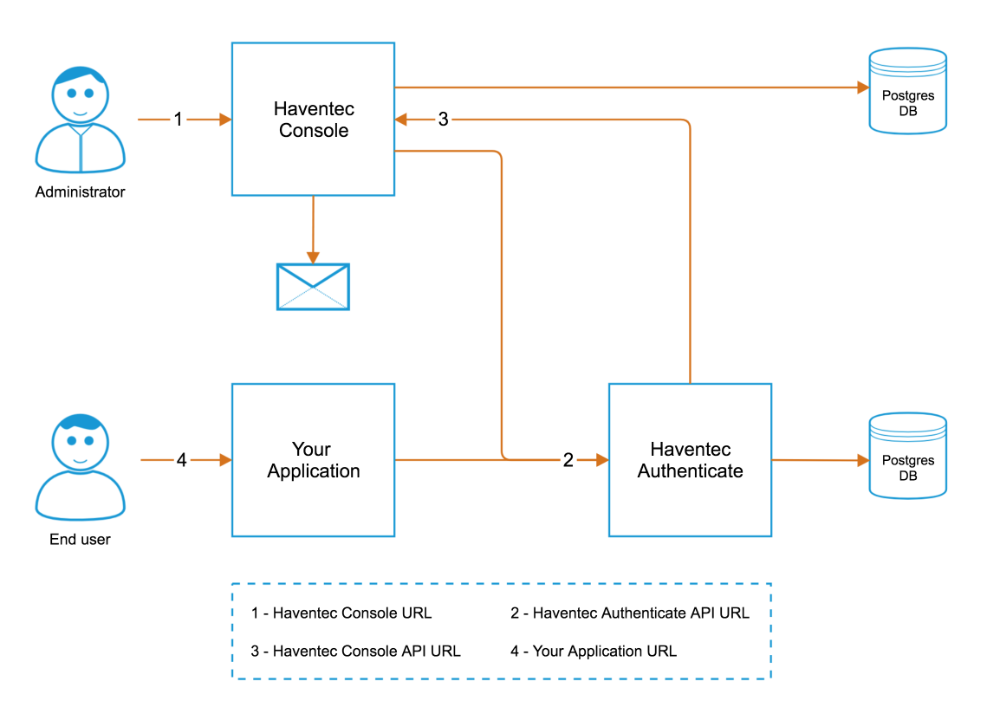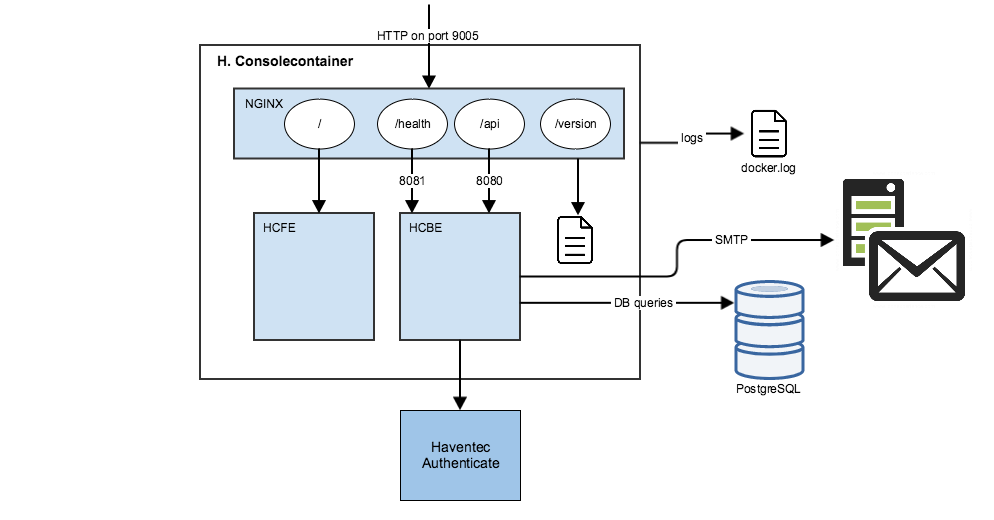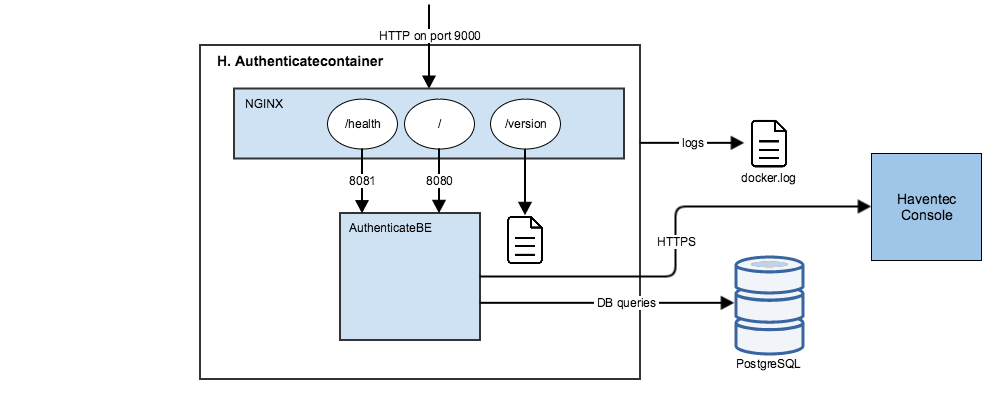Authenticate installation overview
Haventec Authenticate is available as on-premise or as a cloud demo solution. This manual describes how to install it on-premise.
The Haventec Authenticate on-premise solution consists of two applications:
-
Haventec Authenticate
This is the authentication service and it is in charge of the authentication of your users and their devices.
-
Haventec Console
This is a web app to administrate Haventec Authenticate.

Both applications are provided as separate Docker images.
The Docker images are on a private Docker Hub repository and are not publicly available.
Haventec Console Docker Container Architecture

Haventec Authenticate Docker Container Architecture

Please contact us for further information about an on-premise solution and how to acquire Haventec Authenticate for your organisation.
Prerequisites
-
Database - The Haventec applications are stateless and store all persistent information into databases. Currently, we only support PostgreSQL , and we recommend version 9.6
Note: If you don't have any PostgreSQL DB, it is very easy to set up a PostgreSQL docker container from their official repository.
- Docker - The docker images have been built with Docker Version 18.06.2. Please use a compatible Docker version.
- Entropy - Haventec Authenticate requires a level of entropy above 2000 and a bandwidth of 20kB/s. We recommend to install the package rng-tools in the OS that runs the docker containers in order to provide entropy. You could test the entropy of your OS with the following commands.
Check entropy levels:
cat /proc/sys/kernel/random/entropy_availCheck the entropy bandwidth:
dd if=/dev/random of=/dev/null bs=1024 count=10 iflag=fullblock - SMTP Mail Server - Haventec Console requires an email server in order to send activation tokens to users email addresses.